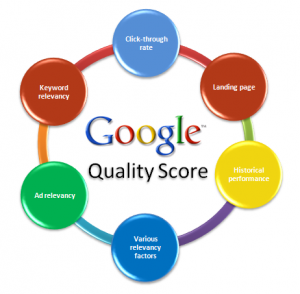 At the start of Search Engine Optimisation (SEO) process many of us seem to be playing the man vs. machine game. We try to build various links to bring the rankings of a website up. And your website doesn’t even have to look good you can appear on page one of Google by building backlinks to your site. But once you hit page one and start appearing higher on the page, the rules change; it’s not man vs. the machine so much anymore. Google has human raters to rate the top websites. So you might have gotten away with your low quality website for a while and ranked fairly high, but if you’re hit with a Google Quality Rater, they can make your website disappear of the radar if they feel it’s spammy or not relevant enough, useful or of good quality to belong on page one.
At the start of Search Engine Optimisation (SEO) process many of us seem to be playing the man vs. machine game. We try to build various links to bring the rankings of a website up. And your website doesn’t even have to look good you can appear on page one of Google by building backlinks to your site. But once you hit page one and start appearing higher on the page, the rules change; it’s not man vs. the machine so much anymore. Google has human raters to rate the top websites. So you might have gotten away with your low quality website for a while and ranked fairly high, but if you’re hit with a Google Quality Rater, they can make your website disappear of the radar if they feel it’s spammy or not relevant enough, useful or of good quality to belong on page one.
You must understand that Google is about bringing the best possible results to people. That’s why Google is changing its algorithm constantly, they want to improve and are always thinking of what else they can do to make the searching experience quicker, easier and bring the best possible results. So if you’re hit with a manual review, the raters will look if your website is relevant to the keywords you’re ranking for. They look to see what a user entering a particular keyword might want to achieve and if your website would be useful to them. There are 3 query types according to Google:
1. Navigation Intent- Users want to navigate to a particular website or a page.
2. Information Intent- Users want to find information about a product, service, person or any other topic of interest.
3. Action Intent- Users want to accomplish a goal or participate in an activity, which can range from actually purchasing a product or finding a game to play.
Although some queries fit into more than one type of user intent.
When a website is rated it can fall under one of the six categories:
1. Vital- This is a top ranking for a website. There are several ways a website can achieve this rating. If the query is a navigational intent, for example entering IDA the vital result would be the idaireland.com website. Or if a user is searching for a particular person, place, product, or restaurant and the landing page of the website provides exactly that information.
2. Useful- A website can be ranked as useful if the page would be very helpful to most of the users. The page should be also of good quality and fulfil the users’ query.
3. Relevant- A page would be ranked as relevant if it is helpful to many or some users. Relevant pages should still fulfil the users’ query and be of good to average quality.
4. Slightly Relevant- This ranking is assigned if a page would be not very helpful to most of the users. These pages would also be of lower quality and contain less helpful information.
5. Useless of Off-Topic- And finally, a page can be rated as Useless if your keywords that you’re ranking for would not achieve users intent, provide wanted information or if it would barely help any users.
6. Unratable- And there are cases when pages are unratable due to such reasons, as the page didn’t load or if it is in a foreign language. Other reasons may also include the page being flagged as Spam or malicious.
So there are many things that you should consider if you want to stay at the top of page one on Google. Don’t rank for keywords that will not give the users what they actually want. Google pays attention to that and while you might be able to get away with it for a while, sooner or later you will be penalized. And also make sure that you have done you On-Page Optimisation and enhanced the quality of your website.





Connect With Us